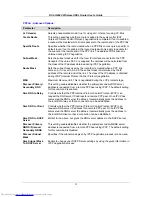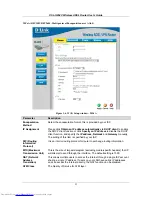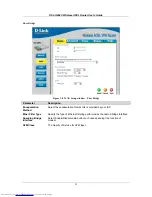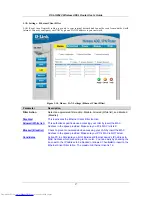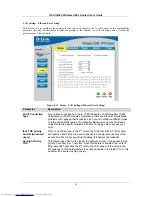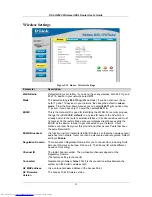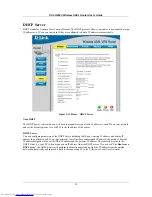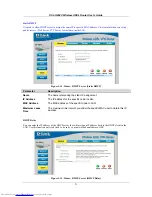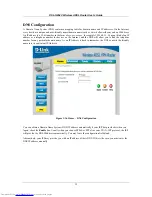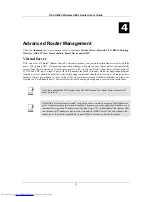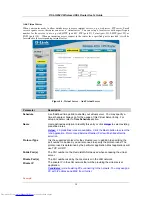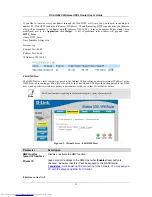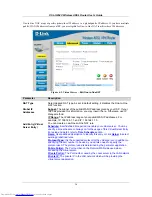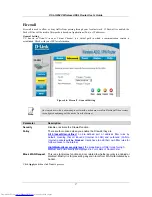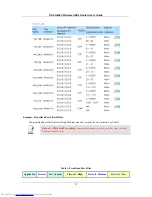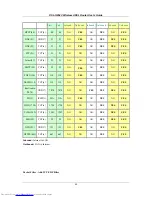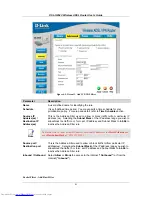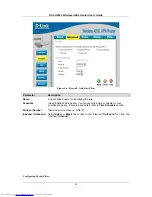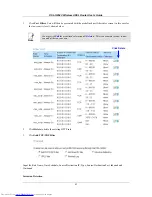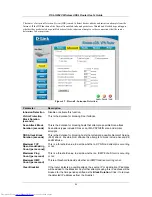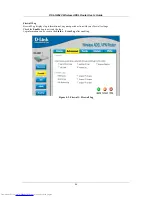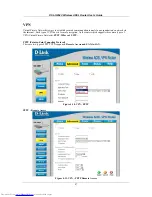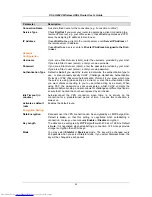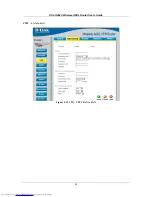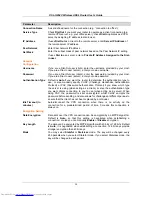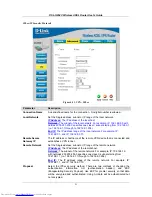
DSL-G804V Wireless ADSL Router User’s Guide
One-to-One NAT maps a specific private/local IP address to a global/public IP address. If you have multiple
public/WAN IP addresses from you ISP, you are eligible for One-to-One NAT to utilize these IP addresses.
Figure 4-3. Virtual Server –
Edit One-to-One NAT
Parameter
Description
NAT Type
Select desired NAT type. As set in default setting, it disables the One-to-One
NAT function.
Global IP
Addresses
Subnet:
The subnet of the public/WAN IP address given by your ISP. If your
ISP has provided this information, you may insert it here. Otherwise, use IP
Range method.
IP Range:
The IP address range of your public/WAN IP addresses. For
example, IP: 192.168.1.1, end IP: 192.168.1.10.
Add Entry (Virtual
Server Entry)
You can create a new One-to-One NAT rule.
Schedule:
A self-defined time period to enable your virtual server. You may
specify a time schedule or Always on for the usage of this Virtual Server Entry.
For setup and detail, refer to
Time Schedule
section..
Name:
Users-defined description to identify this entry or click
Helper
to select
existing predefined rules.
Protocol Type:
It is the supported protocol for the virtual server. In addition to
specifying the port number to be used, you will also need to specify the
protocol used. The protocol used is determined by the particular application.
Public Port(s):
The Port number on the Remote/WAN side used when
accessing the virtual server.
Private Port(s):
The Port number used by the Local server in the LAN network
Private IP:
The private IP in the LAN network which will be providing the
virtual server application.
36

